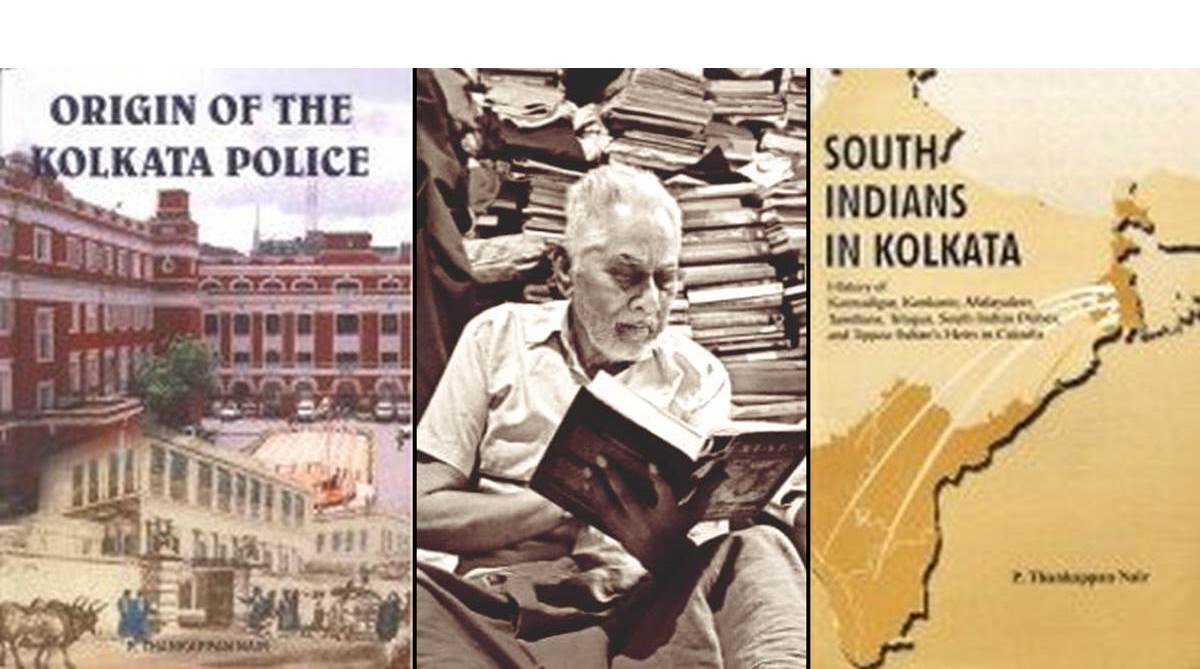Colonial conundrums and spirited sojourns
It's not just a city of literature and sweets; it’s a city that harbours spirits of the bygone eras, lurking behind ornate windows, baroque cornices and weathered facades.
P Thankappan Nair now seeks to research the history of Malayalam printing, which is stated to have originated in Chandamangalam, his village in Kerala

P Thankappan Nair has left for his home state Kerala.
Last week, a more-than-six-decade long association between a man and Kolkata came to an end. The most famous barefoot historian of the city, P Thankappan Nair, caught a flight to his home state Kerala. On the eve of his final departure from the city he had made his home, the indefatigable researcher did not vary his daily routine.
Nair had trudged to National Library, a 10-minute walk from his modest home, to say goodbye to all those who had helped him in his research to pen his books. He and his wife, Sita, travelled light to the airport when they left their Kansaripara home in Bhowanipore in south Kolkata with a few books and belongings.
Advertisement
Arriving in search of a job in a city which was then called Calcutta, Parameswaran Thankappan Nair had walked from Howrah station to Dalhousie Square on an October day in 1955 to look up an acquaintance for a job. The young matriculate was armed with his knowledge of shorthand and type writing, a qualification which was sufficient to land a job in a company which then abounded the city.
Advertisement
Walking through a city rising from its slumber, he arrived at the General Post Office (GPO) looking for U Raman. Raman arrived after a patient wait, and took the newcomer from the former’s place of work to his home near Kalighat temple.
The duo walked all the way to Kalighat. It was during this journey that Nair’s love for the city, which he had first seen earlier during the day, blossomed and it had bloomed down the decades.
He got a job with a three-figure salary and shelled out amounts from it for his food bills which would not even be called paltry against the backdrop of today’s prices. Meanwhile, he walked through the thoroughfares, lanes and by-lanes of the city collecting material from books, old documents and talking to local people as he feels that oral history helps one delve deep into the history of an area and ensures all about its mansions and monuments, huts and hovels are known inside out.
All these years, he led a frugal life and took down notes on scraps of paper. Back at his Bhowanipore home, he sat down at his old Remington. The book on Job Charnock hit the shelves and Nair had arrived. His quiet evenings began to be interrupted by visitors who had to come sans an appointment, as one of the most knowledgeable men on the city abhors a land telephone or a mobile.
Even as he nursed his habit of remaining undisturbed by a tinkle, senior government officials, researchers and of course veteran journalists and young scribes made a beeline to his Kansaripara home. Among them was a firebrand Opposition leader, who sat in a dharna to make Nair change his mind about giving his books to an institution controlled by the ruling Left Front.
Over the years, Nair has authored 62 tomes. Gandhiji in Bengal is scheduled to come out during the book fair next year.
Leaving Kolkata is a wrench for Nair as its inhabitants have their hearts in the right place. “I have come across helpful people all these years who once they meet you in streets keep you in mind and are ready to do you a good turn when you need it,” he fondly recalls.
Apart from enjoying his leisure catching up with old times in the company of his grand daughters at his village home in Chandamangalam, Nair seeks to spend a fruitful time researching the history of Malayalam printing which is stated to have originated in this hamlet.
The last thing that the Kolkata chronicler will do is to hang up his boots.
Advertisement